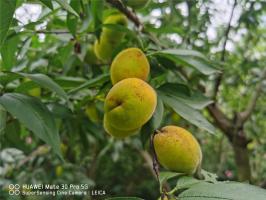Introduction
Watering plants is an essential part of taking care of them. While you can use regular water for this purpose, using banana water can provide additional nutrients to the plants that help them grow better. In this article, we will guide you on how to make banana water for watering plants.
Ingredients and equipment
The ingredients and equipment needed to make banana water are minimal and readily available. You will need:
1-2 bananas
Container with a lid
Water
Kitchen knife
Steps to make banana water
Follow these simple steps to make banana water:
Peel the banana(s) and slice them into small pieces using a kitchen knife.
Place the sliced bananas into a container with a lid.
Add enough water to the container to cover the banana slices.
Securely close the container lid and let it sit for 24-48 hours. The longer you let it sit, the stronger the banana water will be.
After 24-48 hours, strain the mixture using a fine mesh sieve or a cheesecloth to remove any residue.
Your banana water is now ready to use for watering plants.
Tips for using banana water on plants
Before using banana water on your plants, you should keep in mind the following tips:
Use banana water as a supplement to regular watering, not as the sole source of water for your plants.
Do not use banana water on plants that are sensitive to high levels of potassium. Bananas are high in potassium, and using banana water excessively can lead to potassium toxicity in your plants.
Use banana water on plants that are actively growing, as they will need more nutrients to support their growth than dormant plants.
Only use fresh banana water for watering plants. Do not store it for an extended period as it can spoil and cause harm to your plants.
Conclusion
Using banana water for watering plants is an easy and affordable way of providing nutrients to your plants. By following the simple steps outlined in this article, you can make your own banana water and help your plants thrive. Remember to use it as a supplement to regular watering, and to keep in mind the tips for using it to avoid harming your plants.

 how many times do yo...
how many times do yo... how many planted tre...
how many planted tre... how many pine trees ...
how many pine trees ... how many pecan trees...
how many pecan trees... how many plants comp...
how many plants comp... how many plants can ...
how many plants can ... how many plants and ...
how many plants and ... how many pepper plan...
how many pepper plan...






























